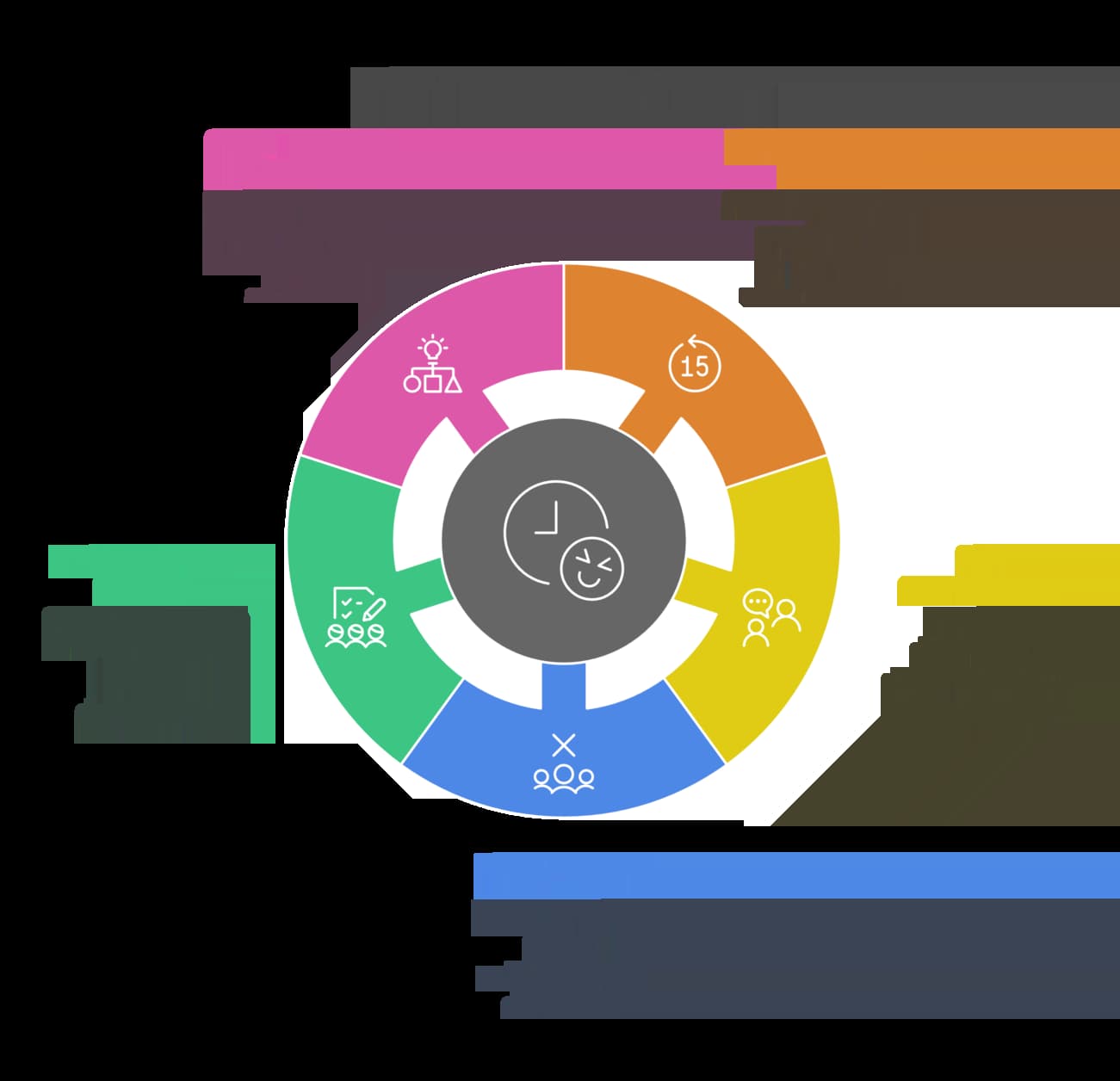The Importance of Productive Standups in Remote Teams
In traditional office environments, spontaneous interactions facilitate quick updates and alignment. However, remote teams lack this immediacy, making structured productive standups essential. These meetings serve several critical purposes:
-
Aligning Team Objectives: Regular check-ins ensure all members are aligned with current goals and priorities.
-
Identifying and Addressing Blockers: Promptly recognizing obstacles allows for swift resolutions, maintaining project momentum.
-
Fostering Accountability: Regular sharing of progress promotes responsibility and transparency within the team.
-
Enhancing Collaboration: Open forums encourage knowledge sharing and collective problem-solving, strengthening team cohesion.
Organizations like BlackWhaleDev emphasize the significance of productive standups for online working to maintain synchronization across their distributed teams.
Key Elements of Productive Meeting Setups
Effective productive meeting setups are characterized by several key elements:
-
Clear Objectives: Every meeting should have a defined purpose to keep discussions focused and goal-oriented.
-
Structured Agendas: Outlining topics in advance ensures comprehensive coverage and efficient time management.
-
Relevant Participants: Including only necessary team members maintains efficiency and prevents information overload.
-
Time Management: Adhering to allocated durations respects participants' time and maintains engagement.
-
Actionable Outcomes: Concluding with clear action items ensures accountability and drives progress.
At BlackWhaleDev, these principles are integral to their productive meetings, ensuring each session contributes meaningfully to project advancement.
Advanced Strategies for Conducting Productive Standups for Online Working
-
Consistent Scheduling: Holding standups at the same time daily fosters routine and reliability, making it easier for team members to plan their work around these meetings.
-
Standardized Questions: Utilizing a uniform set of questions streamlines communication and sets clear expectations. For example:
-
What did I accomplish yesterday?Steady
-
What are my goals for today?
-
Am I facing any blockers?
-
-
Time Efficiency: Limiting standups to 15 minutes encourages concise updates and respects participants' time, preventing meeting fatigue.
-
Effective Use of Technology: Employing reliable audio-visual tools ensures clear communication. Platforms like Zoom or Slack, integrated with transcription services such as Otter.ai, enhance the quality of productive standups by providing searchable records of discussions.
-
Inclusive Participation: Encouraging all team members to contribute fosters a collaborative environment. Rotating the facilitator role can further engage team members and distribute responsibility, promoting a sense of ownership and leadership within the team.
-
Asynchronous Options: For teams across multiple time zones, asynchronous updates via shared documents or dedicated channels can maintain continuity without scheduling conflicts, ensuring all team members are informed regardless of their location.
-
Visual Aids: Incorporating visual aids like shared screens or digital whiteboards can help illustrate points more effectively, catering to visual learners and enhancing understanding. Tools like Vibe Boards facilitate interactive and collaborative discussions during standups.
-
Follow-Up Documentation: Providing a brief summary of the standup discussions and action items in a shared document ensures that all team members, including those who may have missed the meeting, are informed and can refer back to key points as needed.
Enhancing Productive Meeting Setups
To optimize productive meeting setups, consider the following best practices:
-
Agenda Circulation: Distributing the agenda beforehand allows participants to prepare, leading to more informed and focused discussions. This practice ensures that all necessary topics are covered and that participants can contribute meaningfully.
-
Role Assignment: Designating roles such as facilitator, timekeeper, and note-taker ensures organized and efficient meetings. Clear role definitions help in managing the flow of the meeting and ensure that all aspects are addressed.
-
Leveraging Collaborative Tools: Utilizing platforms like Notion or Trello for real-time note-taking and task management enhances engagement and accountability. These tools allow participants to track action items and collaborate effectively during and after the meeting.
-
Regular Reviews: Periodically evaluating meeting effectiveness through feedback helps in continuous improvement. Soliciting input from participants on what is working well and what needs adjustment can lead to more productive and engaging meetings.
-
Breakout Sessions: For larger meetings, utilizing breakout rooms can facilitate focused discussions among smaller groups, leading to more in-depth exploration of topics and increased participant engagement.
-
Interactive Elements: Incorporating polls, Q&A sessions, and interactive discussions can increase engagement and provide diverse perspectives, making meetings more dynamic and inclusive.
-
Time Zone Considerations: When scheduling meetings for a global team, rotating meeting times can ensure that no single group is consistently disadvantaged by inconvenient timings, promoting fairness and inclusivity.
-
Clear Meeting Etiquette: Establishing guidelines for virtual meetings, such as muting when not speaking and using video to enhance presence, can improve the overall meeting experience by minimizing distractions and fostering better communication.
Addressing Challenges in Remote Standups and Meetings
Remote settings present unique challenges, such as:
-
Digital Fatigue: Continuous virtual meetings can lead to burnout. Implementing shorter, more focused meetings can alleviate this issue. Vibe+1businessinsider.com+1
-
Time Zone Differences: Coordinating across various time zones can be complex. Utilizing asynchronous communication methods and rotating meeting times can help accommodate all team members.
-
Engagement Levels: Maintaining attention during virtual meetings can be challenging. Incorporating interactive elements and encouraging video participation can enhance engagement.
-
Technical Issues: Unreliable internet connections or software problems can disrupt meetings. Ensuring all team members have access to reliable technology and providing technical support can mitigate these issues.
By proactively addressing these challenges, teams can enhance the effectiveness of their remote communications, leading to improved collaboration, productivity, and overall success in a virtual work environment.
